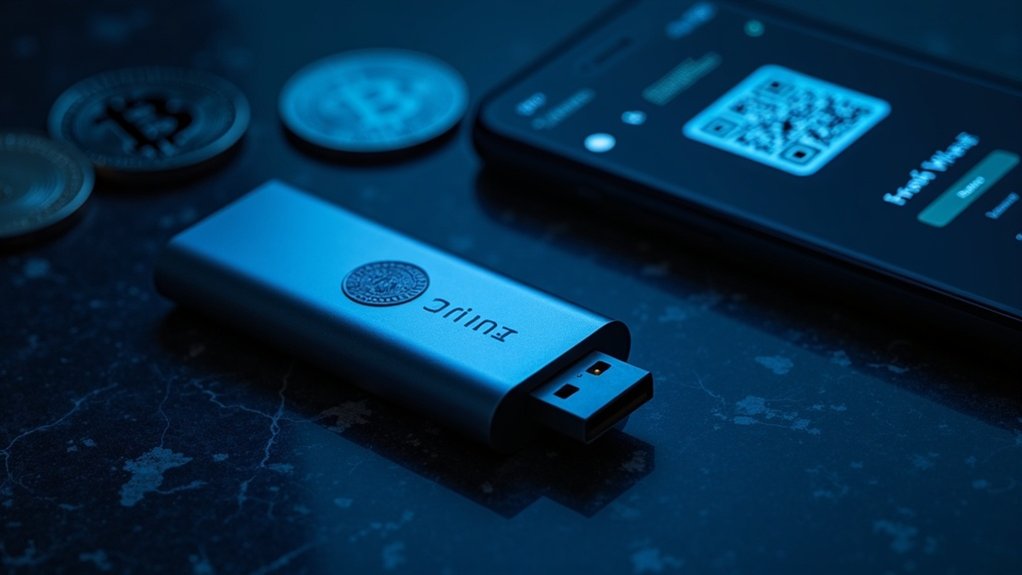Polygon MATIC solves Ethereum’s biggest headaches: slow transactions and ridiculous fees. Originally called Matic Network, this Layer 2 scaling solution processes transactions off the main Ethereum chain, then bundles them back. Users enjoy speeds up to 65,000 transactions per second at less than a penny each. The MATIC token powers the whole ecosystem – for fees, staking, and governance. It’s basically Ethereum without the pain. Dig deeper and your crypto wallet might thank you.
Why do cryptocurrency enthusiasts get excited about Polygon MATIC?
It’s simple.
Speed and savings.
Polygon operates as a Layer 2 scaling solution that runs alongside Ethereum, offering transactions that are both faster and dramatically cheaper.
No more waiting hours for confirmations or paying gas fees that cost more than your coffee.
That’s why people care.
Polygon wasn’t always “Polygon.”
Founded in 2017 as Matic Network by Jaynti Kanani, Sandeep Nailwal, and Anurag Arjun, the project aimed to tackle Ethereum’s notorious congestion problems.
Their solution? A sidechain architecture using Proof-of-Stake consensus.
The project recently evolved into a versatile multi-chain ecosystem supporting various scaling technologies.
Brilliant, really.
The founding team eventually raised over $450 million from investors, including billionaire Mark Cuban.
Not too shabby.
The technical stuff matters.
Polygon processes transactions off Ethereum’s mainnet using various scaling techniques like Plasma and zk rollups.
Then it periodically submits Merkle roots back to Ethereum.
This creates a sweet spot—the security of Ethereum with the speed of a dedicated chain.
Transactions cost less than a penny.
Yes, a penny.
Remember when Ethereum gas fees hit hundreds of dollars? Polygon users barely noticed.
MATIC, the network’s native token, powers the entire ecosystem.
It’s used for transaction fees, staking, and governance voting.
The token has a fixed supply cap of 10 billion, which keeps inflation in check and theoretically supports long-term value.
Economics 101.
The ecosystem is booming.
DeFi applications, NFT marketplaces, games, DAOs—they’re all there.
Users can easily participate by bridging crypto assets from Ethereum to Polygon through compatible wallets.
Developers love the compatibility with Ethereum tools.
Users love the speed.
It’s a win-win situation that’s driving adoption across the board.
While Ethereum processes about 14 transactions per second, Polygon can handle up to 65,000 transactions per second with minimal fees.
For beginners, Polygon represents an entry point into blockchain without the prohibitive costs.
The architecture is complex, but using it isn’t.
That’s the beauty of good technology.
It just works.
And in the often-complicated world of crypto, something that just works is worth getting excited about.
Frequently Asked Questions
How Does Polygon’s Gas Fee Structure Compare to Ethereum’s?
Polygon gas fees are dirt cheap compared to Ethereum’s bank-breaking charges.
We’re talking $0.0005-$0.01 on Polygon versus a wallet-emptying $5-$50+ on Ethereum.
Why? Polygon handles 7,000 transactions per second while Ethereum crawls at 27 TPS.
Ethereum’s congestion is legendary.
Both calculate fees differently too – MATIC for Polygon, ETH for Ethereum.
Bottom line: Polygon sacrifices some decentralization for speed and affordability. Ethereum? Security at your expense.
Can I Stake MATIC Tokens Without Running a Validator Node?
Yes, anyone can stake MATIC without running a validator node.
It’s called delegation.
Simple concept: you delegate your tokens to an existing validator and earn rewards minus their commission.
No technical headaches. No need for the 10,000 MATIC minimum.
Options are plentiful—use Polygon’s staking portal, exchanges, or liquid staking services like Stader Labs.
Your tokens stay secure in smart contracts. Validators can’t touch them. You just collect rewards. Pretty sweet deal.
What Security Measures Protect Assets Bridged From Ethereum to Polygon?
Assets bridged between Ethereum and Polygon are protected by dual security layers.
The PoS Bridge locks tokens on Ethereum while minting equivalents on Polygon, enforced by validators who stake MATIC tokens.
These validators? They face slashing penalties for dishonesty.
The Plasma Bridge adds extra protection with 7-day withdrawal periods and fraud proofs.
Smart contracts handle all locking and minting automatically, while regular security audits catch vulnerabilities.
No personal info needed—just cryptographic verification.
How Will Ethereum 2.0 Affect Polygon’s Relevance and Value?
Ethereum 2.0 won’t kill Polygon. Not anytime soon.
Even with sharding and PoS, Ethereum’s scaling roadmap stretches years into the future. Meanwhile, Polygon keeps processing transactions cheaper and faster.
Sure, ETH 2.0 might squeeze Polygon’s value proposition eventually. But the multi-year rollout gives Polygon time to evolve.
Network congestion isn’t disappearing overnight. Besides, Polygon’s developer ecosystem and cross-chain capabilities offer value beyond mere scaling.
They’re complementary, not competitive. For now.
Which Major Defi Protocols Have Already Implemented Polygon Integration?
Several major DeFi protocols have embraced Polygon integration.
Aave leads the pack with significant TVL, while Quickswap serves as a native DEX powerhouse. Balancer, Beefy Finance, and GMX have also jumped on board.
Stablecoin projects like USDC.e and DAI maintain strong presence. Real-world asset platforms? Centrifuge and Maple Finance are in.
Even Stripe’s joining the party in 2025. Pretty impressive reach, honestly. Polygon’s captured 12% of all EVM-compatible DeFi TVL.








